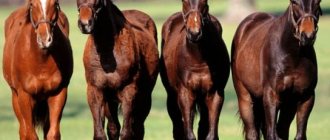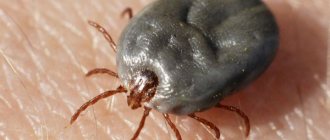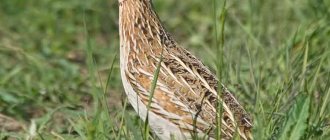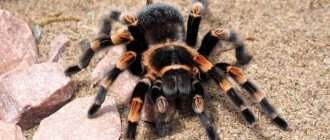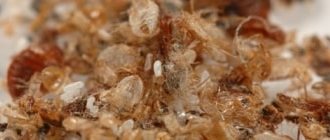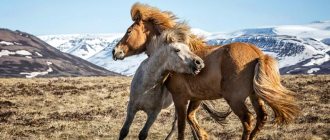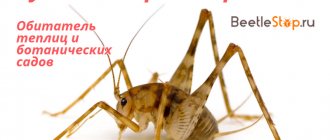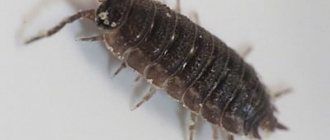video news
For many hunters, the goose becomes a very long-awaited trophy, which is quite difficult to obtain due to the extreme caution of the bird and the need for careful preparation for hunting it. And when planning a spring goose hunt, you need to make sure that several factors coincide at the same time:
- Opening of the goose hunting season with its flight time and good weather conditions
- Selecting a suitable base, the location of which coincides with the place of flight of geese. There must be food fields here, as well as access to water, which is very important for the bird.
- Developing suitable hunting tactics, patience and professionalism. Availability of special shelters
- Availability of high-quality goose decoys and stuffed animals, properly selected weapons with ammunition, as well as hunting skills that require accurate shooting
Types of geese that are allowed to hunt
Before you begin preparing for a goose hunt, you need to determine the type of bird that will be the most preferred trophy. In Russia there are only 8 species of geese and 3 species of geese. But not each of these species is suitable for consumption and is allowed to be harvested.
For example, you should not hunt the swan-nose - you can distinguish it by its black beak and a black stripe on the back of its neck. Hunting for whiteneck is prohibited. It has a grey-bluish coloration, a white head and the back of the neck. The meat of the listed bird species has an unpleasant odor, which is why no one eats it.
You should not wonder about hunting mountain goose, white goose, or lesser white-fronted lesser white-fronted goose. They are classified as an endangered species, therefore hunting for them is prohibited and administrative liability is provided for the production of such geese.
Very often, inexperienced hunters confuse the white-fronted goose with the white-fronted goose, especially in flight, while their flocks can merge into one. In fact, the lesser white-fronted lesser white-fronted white-fronted lesser white-fronted white-fronted white-fronted white-fronted white-fronted lesser has a larger head with a high forehead, and its wings extend beyond the end of its tail. The white spot located on the forehead partially extends to the crown. You may notice yellow circles around the eyes. You can also distinguish the lesser white-fronted white-fronted duck in flight; its wings are more elongated and sharp, and their flapping is more frequent. The cry of the lesser white-fronted white-fronted duck is more sonorous. This is how it differs from the white-fronted goose. There remain three species of geese that are not prohibited from hunting in the Russian Federation. This:
- White-fronted goose
- Gooseberry
- Grey goose
Let's look at each of them in more detail. Let's start with the gray goose. It is distinguished by its heavy weight, often reaching 5.5 kg. It has a long neck and a fairly thick beak, if you compare its size with the size of the head itself. The gray goose feeds on land, despite the fact that it is an excellent swimmer and diver, it will only hide in the water if it is injured or in the process of molting. Gray geese are very shy; any rustle or extraneous sound can scare away the bird. The gray goose lives in the south of the country or in Siberia, as well as on the Black Sea coast. Before the onset of winter, birds fly away to the Mediterranean Sea and move towards China, India, and Afghanistan. In winter, they can sometimes be seen on the coast of the Black or Caspian Seas.
White-fronted goose is considered the most numerous species. It is small in size, weighing only 3.2 kg. You can identify a white-fronted goose by a white spot on the forehead, as well as black stripes on the belly, which are located in such a way that they vaguely resemble a vest.
White-fronted geese live near fresh water bodies. Most often they are found in the tundra zone. In winter, the bird flies to India and China. Can move towards East Asia, Southern Europe, Japan.
The bean goose is another species that is very popular among hunters. Its dimensions are quite large, weight can vary between 2.5-4.5 kg. This type of geese prefers land, so you rarely see its representatives in water bodies. But even on the ground, geese move very briskly, easily dodging inexperienced hunters.
Externally, the bean goose is difficult to confuse with another species of bird. It is distinguished by a white-gray neck and belly, dark wings with white tips on the feathers. The undertail of a goose is pure white. The beak is black; if you look closely, you can see a red spot on it.
Hunting for geese is also popular; of the only three species allowed for hunting: red-breasted, barnacle and black. Hunting for them also has its own characteristics, which need to be considered as a separate topic.
General signs
Wild geese are classified as members of the duck family. But there are several differences:
- Long neck;
- strong physique;
- big beak
Geese are significantly smaller in size than swans, their necks are shorter, and their bodies are smaller and lighter. The head has full plumage. The wild goose is significantly larger than ducks. Their beak, unlike ducks, is narrower and higher. The plumage of females and males is the same. Its main colors are white, gray, black and brown.
Wild geese are distinguished by their beautiful and varied plumage of brown, grey, white and black.
Along the edge of the beak, geese have special ridge plates that prevent food from jumping out of the beak during the process of filtering it from water or silt. These plates also serve as teeth when collecting green food in the pasture.
When and where is the best time to hunt a goose?
Experienced hunters know that the time to hunt this bird is spring and autumn. But with the arrival of spring, the number of hunters increases noticeably, this is precisely due to the fact that in the spring geese fly from warm regions, often stop to rest and search for food; at this time of year, hunting becomes the most productive. It is important to choose the right time not only, but also to guess the weather. For example, if the weather conditions are bad, clouds are visible in the sky, there is a strong gusty wind, geese have to fly from one place to another up to 6 times a day. In sunny and clear weather, the number of flights is reduced by 2-4 times.
Linda
The Linda breed is considered precocious. At eight months of age, the bird weighs from 7 to 8 kilograms. Already at six months, the goose begins to lay eggs, the survival rate of which reaches 80%. Up to 70 eggs are released per year.
Geese of this breed are a good option for breeding at home for beginners. The birds are undemanding to care, eat traditional food well, and quickly acclimatize to heat and cold. Business profitability is 100%.
There are no disadvantages as such, but the farmer will have to take care of the round-the-clock availability of water in drinking bowls and arrangement of dark corners. The latter are needed for privacy, as the bird loves peace.
What you need to know when hunting a goose
All geese have their favorite places where they visit most often and stay for a long time. These are mainly large bodies of water where you can swim and eat. Birds also love to walk through plowed winter fields, as well as fields where corn, rye and other cereals were harvested in the fall; such places are considered the most suitable for feeding geese. Thinking that while the birds are eating, it will be much easier to get a few of them, beginners in the field of hunting are very mistaken. Birds are very careful about their own safety, so while most of them are eating, some individuals raise their heads high up, watching what is happening around them. Therefore, it is unlikely that a hunter will be able to overcome the 300-meter mark; he will simply scare away a flock of birds and lose his prey. In addition, sometimes scouts are the first to arrive at the feeding site - these are several individuals that are in each flock, their task is to study the situation and understand if there is any danger. If everything is calm, the scouts give the others a sound signal, which means that they can fly to feed. In this case, it is important to understand that you cannot shoot at the scouts, because the main part of the flock simply will not want to land here, the likelihood of a successful hunt and getting many trophies will be in big question.
Breeding
Breeding wild geese is not a difficult matter; the birds are quite unpretentious. You can quickly accustom them to your hands.
The diet requires sufficient pasture, as well as plenty of water. Birds tolerate cold easily, but lay eggs less often. In order for pets to reproduce better, you need to turn on electric lighting: this will lengthen daylight hours.
During the season, one female lays approximately 80 eggs. In captivity, geese can hatch chicks from the age of eight months, hatching up to 15 eggs. “Families” should be formed from one gander and seven geese. Males are removed for the winter. Chicks feeding on cereals and grass are transferred to a warm room, making sure that they do not roll over on their backs, since they cannot return to the correct position on their own.
Ways to hunt a goose. Preparation
Considering the extreme caution of birds and their foresight, it is very important to choose the most suitable method of hunting a goose, because the number of trophies obtained will depend on it. Let us immediately note that some hunters resort to cunning, hunting birds during the molting period. Then the geese are unable to quickly react to danger; they can be killed even without the help of a gun. But this method is considered accessible and inhumane, and does not bring any joy to most hunters. This is not surprising, because for almost every hunter, catching a goose is not only the achievement of a set goal, but also an uncontrollable passion that adds adrenaline to the blood. That is why the choice will be made between the following types of hunting:
- Hunting during the night
- Hunting during the flight
- Hunting while feeding
- Surge hunting
You need to choose the most suitable hunting method based on your own skills and abilities and the equipment available.
Goose hunting during migration
This is one of the most popular methods of hunting geese, which is preferred by experienced hunters who know how to hit a moving target and know which way the birds will move. In this case, it is best to be located on some hill, because it is over mountains and hills that geese fly as low as possible. It is worth noting that at night, especially if there are strong gusts of wind, birds can drop so low that they practically touch the ground, then it will be even easier to shoot prey.
You can also sit in the copses near ponds or fields. When the geese fly to feed, the probability of getting several good trophies is very high. In this case, it is better to shoot from a standing position, located in the bushes.
If an open area, for example a field, is chosen for hunting, then you will need to build a shelter here by digging a special hole - a hide. The depth of the hole should be approximately one meter, so that the hunter could sit down in it, completely hidden, only his head should be above the surface. To make it more convenient to wait for prey, you can leave a small ledge in the hole where you can sit down while waiting.
It is important to remember that you cannot get up from your hiding place; this can only be done if the entire flock has already flown past. Birds cannot see anything behind them, but in front they can inspect the territory at an angle of 45 degrees. Even if the outermost birds in the flock notice the hunter, they will be able to warn the others of the danger by sounding a sound signal. If you do manage to shoot a bird, you need to very carefully watch where it falls. Very often, prey falls so far that finding it later is very difficult, and sometimes even impossible.
Recently, recumbent hides from American manufacturers have been used very successfully. Such concealments allow you to effectively hunt a goose while lying on the ground while remaining invisible.
Nutrition
The goose is a herbivorous bird, so it nibbles grass, algae, etc.
May eat berries and grains. In spring, it feeds on shoots near water bodies and on what it finds on the ground. Consumes young grass that grows after the snow cover melts.
During nesting, the taste preferences of birds change. During this period, they eat pondweed, a perennial aquatic plant. After the chicks are raised, they switch to their usual food - vegetation near the water.
Goose hunting during an overnight stay
In order to organize a hunt during an overnight stay, you need to know where the geese are located at this time. Usually they fly to the water at night; if there are strong gusts of wind, then the birds can remain on the arable land. Before dark, well-fed geese swim in the pond, and when it starts to get dark, they go ashore to dry off. In this case, you will need to organize a shelter in advance in which the hunter will hide while the geese are swimming. It is important to be patient to wait for the birds to come ashore to dry. Now you can start shooting.
Goose hunting while feeding
Here it is important to be especially observant, because you need to choose the place where geese accumulate in the most significant numbers. To do this, you will have to observe for some time which part of the field the birds visit most often. Next, you need to look where there is the most bird droppings and dig a shelter next to this place.
It is best to start hunting in the evening or early morning, because in the daytime, in bright sunlight, geese see very well, so they will quickly notice any suspicious object and fly away from that place. To guarantee a successful hunt, you can prepare several stuffed gooses that will attract birds with their appearance. Some hunters take live geese for this purpose, which can also call wild geese with a sound signal.
You can shoot at geese at the moment when they are just flying to feed, dropping lower to the surface of the earth, or at the moment when they have already landed and started eating.
Habitats
Habitats depend on the species. They build their nests, depending on the species, in colonies or alone. In one season, birds breed only once. It is common for wild geese to spend most of their time on land, which sets them apart from ducks and swans. They can live on the coast of fresh and salt water bodies. Geese have webbed feet, and thanks to this they can swim and dive well, paddling with them like flippers. When flying, they emit characteristic screams.
Main places of stay:
- in damp meadows;
- in overgrown marshy areas;
- at river mouths;
- near the stream;
- near lakes, ponds, etc.
Also, when organizing a nest, wild geese prefer to live next to birds of prey (falcons, buzzards), which protect their territory from predatory animals.
Hunting a goose by driving
If you go hunting with friends, you can take prey in bulk. This will require several hunters to position themselves at the edge of the field where the geese usually eat. One person at a distance of about 150 meters from the geese should walk past them, so as to move the birds away from the shooters. It is worth noting that the most productive surges are those organized early in the morning, when hungry birds fly to the field to eat. Please note that according to the hunting rules, any shooting of a goose in the spring is permitted only from cover and using decoys and (or) profiles.
More information about shelter - ambush
Having considered the main methods of hunting geese, it remains to organize proper preparation for this process. The first thing you need to do, if you have chosen the appropriate hunting method, is to organize a hiding place. It is clear that you will have to dig a hole in which you can hide until the geese arrive. But it must be dug correctly, so let’s look at this procedure in more detail.
It is better to dig a hide in a well-lit place, because geese's vision deteriorates when exposed to sunlight, and they try to fly around dark areas. In order for the birds not to notice the shelter, it is necessary to perform high-quality camouflage, using natural materials for this purpose. The hole can be lined with branches or grass, then it will be less noticeable to wild birds. As for the dimensions of the pit, there is no need to be lazy. When organizing a shelter, each hunter should be guided by his height and his physique. For example, the width of the hole should be slightly greater than the width of the hunter’s shoulders, and its length should be one and a half thigh lengths, preferably a little more.
As for depth, it is calculated as 2/3 of a person’s height. Then sitting on a goose will help the hunter to hide, become invisible to the birds, and have a great view of their landing spot.
Sometimes hunters dig a shelter designed for two people, but such organization of hunting is not very effective. It may seem that being in the pit together, people will be able to provide a wider angle of view, increase the likelihood of catching a trophy, and just sitting around waiting for the flock is still more fun together. In fact, there are many more disadvantages in such a hunting organization than the apparent advantages. Firstly, if you shoot in different directions, the hunters will constantly stun each other with shots. Secondly, being in a fit of excitement, people can simply cause injuries to each other. Thirdly, having started a conversation with a hiding partner over a glass of a forty-degree drink, a person risks simply missing a flock flying by and being left with nothing.
Rest assured! Being alone in a shelter can help you hunt more efficiently. Geese never fly silently; they always give vocal signals. It is the sound that will be heard first, which will allow you to quickly orient yourself and turn in the desired direction and aim the sight. Also, geese scream and sit down to feed, so even if you miss the moment of their approach, you can safely shoot while the birds begin to eat.
Note that the use of huts and other shelters that stand out on the ground is not effective; geese, noticing such shelters while still far away on approach, bypass them.
The use of recumbent hides will be effective. These hides are a structure made of an aluminum frame on which waterproof material is used. This material has straps with holes into which you can add local vegetation for camouflage. The frame is equipped with special doors on top to allow the gun to be quickly raised to fire. The advantage of such structures is their ease of transportation and installation in a matter of minutes, as well as the comfort that you will receive while inside it, since you will not be afraid of dampness, rain and wind. The downside is that visibility from such a concealment is very limited and shooting at geese will be carried out from a “reclining” position that is not familiar to many, which will affect the shooting results.
Adlersky
Types of mosses and their habitats
Breeders bred this species in the 20th century in the Krasnodar region, where it is still bred with great success. For the most part, Adlerians are found in the south of Russia. External characteristics:
- elongated body, tightly knit, oval shaped;
- feathers of a snowy shade, have a slightly bluish tone;
- compact head;
- neck elongated, thin;
- limbs are powerfully developed, yellowish in color;
- orange beak.
This is not the largest representative of the goose breed, in addition, it adapts well only in warm conditions, and therefore is not very popular in other parts of the country. Productivity:
- adult weight – up to 7 kg;
- young animals at 2 months weigh approximately four kilograms;
- the meat has a great taste, incredibly tender, and is appreciated by gourmets;
- egg production - up to 35 pieces, the weight of one egg reaches 170 g;
- egg fertilization - approximately ? from the entire masonry;
- the survival rate of young animals is low, slightly more than half, which is noted as a significant drawback.
Stuffed geese are an essential attribute of a successful hunt.
Every experienced hunter knows that by placing stuffed geese on the field, he thereby attracts a whole flock of wild birds that can mistake the decoy for scouts who have examined the area and decided to stop here to feed. Considering the fact that geese are very attentive and cautious birds, they will be able to take a good look at a low-quality stuffed animal, suspecting something wrong, therefore, it is not recommended to take on the production of such baits yourself. This will take a lot of effort and time, and the result may be very far from what was expected. It is best to purchase stuffed geese in a specialized store, which offers a wide selection of products that differ in quality and price. If you need to save money, you can pay attention to domestic products, but their quality level is inferior to imported analogues, which are distinguished by a more natural appearance and correct coloring. Therefore, if such an opportunity exists, it is still better to buy American or Italian stuffed animals that can make the hunt more productive.
Among the American companies engaged in the production of stuffed geese, the following manufacturers can be distinguished: Flambeau, Greenhead, Webfoot, Tanglefree, Cherokee-Sports, NRA FUD and some others. The owners of these large companies themselves are among the avid goose hunters, therefore, thanks to their valuable experience, they know what to pay attention to in production, how to properly make a stuffed animal that is as similar as possible to a real bird.
If we talk about Italian manufacturers, whose products are no less popular among goose hunters, then the most famous company is Sport Plast. The stuffed animals produced by this manufacturer are difficult to distinguish from real geese even at close range. In the production of case and semi-case stuffed animals, not only modern equipment is used, which gives them high quality, but also a special painting technology that makes it possible to almost completely eliminate the possibility of glare. Stuffed animals from this company can easily be adjusted to the desired hunting characteristics; you can use them to create the image of feeding or guarding geese yourself. Representatives of the Middle Kingdom are also trying to keep up with famous manufacturers; as always, they have their share of the market thanks to the low price; stuffed animals from the North Way company are popular here.
All that remains is to choose a stuffed animal based on its design features:
- Full – three-dimensional images of geese that cannot be disassembled
- Collapsible - due to the fact that the body and head are fastened together by the hunter, he will be able to create the semblance of an entire flock, copying the head tilts characteristic of birds
- Crinkle - made of specialized foam polymer, thanks to which they are easily folded or twisted
- Batch ones are inflatable stuffed animals that can sway at the slightest breath of wind.
Another option for luring birds is the profile of geese. If the stuffed animals are three-dimensional images, then the profiles have a flat surface. They are made of plywood and can be made with your own hands. The efficiency of profiles is slightly lower, but it is a cheaper option, especially if you need to place a large number of such structures on the field.
Rules for placing profiles and stuffed geese on the field
After the decoys and profiles have been purchased, you need to study the features of their use and placement; the success of the hunt largely depends on them. There should be about 30 profiles, 10-15 stuffed animals, so in the end you will get a large enough flock that can attract the attention of real geese.
It is necessary to arrange stuffed animals and profiles in groups of 5-6 pieces. The distance between the baits themselves should be small, but between their groups it is worth maintaining approximately 3-5 meters. In this case, the profiles are installed at a certain angle to each other so that birds can see them from different sides. If you install stuffed animals, then it is better to place their heads at different angles so that there is the most accurate imitation of a real flock - someone is eating, and someone at this time is holding their head high, watching what is happening around them (guard geese).
Stuffed animals and profiles are installed at a distance of about 20-30 meters from the shelter itself. They should be located on the side opposite to flight. If the weather is calm, the heads of the scarecrows should be mainly directed to the east, if it is windy - in the direction of the wind. Many hunters place stuffed animals near the shelter, thereby providing themselves with additional camouflage in the form of silhouettes of birds.
Geese decoys
There is another way to increase the efficiency of hunting wild geese - goose decoy. It is similar to a regular whistle, consisting of two parts. The lower part of the decoy is clamped with your hands; air must be blown into the upper part, imitating a whistle. Thus, the device will produce sounds very similar to those heard from a flock of wild geese.
In this case, it is very important to cover the lower part of the decoy well with your hands so that you get a sound that is as close to natural as possible. If this is not done, then the decoy will emit the usual horn, which not only will not be able to attract the flock, but will also scare it away with a high probability. You also need to know that you can get different sounds by using different breathing techniques into the decoy. As a result, you can get the cry of an approaching flock of geese, the signal of a scout who flew first to the field, or the cackle of birds imitating their usual communication.
There are wind and electronic decoys. The latter are more practical because they can reproduce the full range of sounds made by wild geese. They are designed to imitate the sounds of different birds. Accordingly, if you very often go hunting for geese or ducks, such a device will be a universal decoy for each individual occasion.
Electronic decoys are also notable for the fact that they require less effort to use and can produce long series of different sounds. However, the use of such decoys is prohibited by hunting rules and is considered unsportsmanlike among hunters. All that remains is to choose the device. You need to pay attention to the manufacturer, on whom the quality and price of the semolina depend, as well as the material used in the process of its manufacture. Today, the most popular are wooden decoys, as well as decoys made of high-quality plastic - they are convenient because they can be used in any weather, even at sub-zero temperatures, without causing the slightest discomfort to the hunter. Popular decoys here are represented by American companies: Faulk's, Zink, Sean Mann, Buck Gardner, Rich-N-Tone, Primos, Duck Commander, Banded Calls and others. Recently, affordable decoys from a domestic manufacturer under the Schoolhunter brand have appeared on the domestic market.
Important to remember! Before taking a decoy with you on a hunt, you need to carefully study the recommendations for its use and practice making sounds characteristic of the type of geese you are planning to hunt. This way you will get a guarantee that using a decoy will pay off and will not reduce the effectiveness of hunting.
Semolina goose
Another way to attract wild geese to the area of the field where you have organized a shelter is the semolina goose. This is a living bird that can prove to the wild flock that it is safe here and you can eat well. A wild goose is used as a semolina goose, which is raised from a chick that was hunted. You can also take a wild goose egg and place it on poultry. Considering the fact that the goose is a flocking bird, only the hatched baby will quickly get used to an unfamiliar company.
Experienced hunters believe that it is better to use a gander as a semolina goose, because it is more active than a female. It is worth taking care of the reliability of this operation by tying the goose in the right place. To do this, you can use a boot or a cord, gaining confidence that the bird will not be able to escape, and then it will not need to be caught. It is very important to provide the semolina goose with plenty of drink, otherwise it will simply stand silently, not making a single sound, and will be absolutely useless during the hunt. Also, many hunters additionally trim the bird’s wings so that it cannot fly away.
A representative of any species can act as a semolina goose: gray, white-fronted, bean goose.
Nesting
Almost all species of wild geese become sexually mature by three to four years of age. When they arrive to nest, they immediately choose a place for the nest. Construction begins as soon as the ice and snow melt. Females are responsible for the structures; they make them from coastal plants, sometimes from branches. The inside is covered with dead wood and soft grass.
From late March to June, the goose lays about ten eggs. While incubating the offspring, she does not leave the nest; she can only go a short distance away to feed, having first lightly covered the clutch with fluff and dead wood. The chicks emerge on the twenty-eighth to twenty-ninth day.
Choosing a gun for goose hunting
Hunting depends no less on the accuracy of the choice of weapons than on the correct determination of the time and place of its conduct, the use of decoys and stuffed animals. Typically, hunters most often use the simplest double-barreled shotguns with a caliber of 12 or 16 for hunting. More experienced craftsmen use self-loading shotguns. This could be Benelli, Browning, Fabarm, Stoeger and many others. If we talk about domestic weapons, then the analogues of the listed types of guns will be MP-153, MP-155, less often MTs 21-12, Bekas-Auto and others.
Now you need to choose a fraction. Today you can select fairly high-quality factory cartridges that will ensure a good shotgun fire, however, hunters often use self-loaded cartridges with experimentally selected weights of gunpowder and shot. When hunting geese, the shot used is 1, 2 or 3, no less and no more, weights from 32 to 40 or even more grams. Many “lovers” of shooting geese at extreme distances use buckshot cartridges, we assure you and warn you that nothing good will come of this idea, you will not only violate hunting legislation, but what’s even worse, you can injure the bird. Some hunters boast about how they killed a goose 100, 200 or more meters away with buckshot, all these are accidents that have nothing to do with proper goose hunting.
Danish Legart
The breed, bred in Denmark, is one of the best in the world. Its features include:
- average build;
- the weight of males is 7.5-8 kg, and females - from 5.5 to 7 kg;
- deep and long body;
- medium length neck;
- small beak;
- a small fold of fat on the abdomen;
- orange paws and beak;
- white plumage.
Danish Legart is distinguished by its unpretentiousness and high survival rate of goslings. The female produces from 30 to 40 eggs weighing up to 200 g per year. The goslings quickly gain weight and by three months can weigh up to 7 kg.
The breed is famous for its fluff. Birds can begin to be plucked from the age of one year every month and a half. As a result, up to 500 grams of fluff are collected from one individual per year.
The Danish Legart is very sensitive to temperature changes, so in the winter it requires keeping in warm poultry houses. In summer, geese fatten meat well on pastures, and when slaughtered in November-December, they have marketable carcasses. Males become sexually mature three weeks later than females. Geese enter the egg-laying season in April.
Hunter Camouflage
Decoys, sights, and a properly selected gun are the key to success in hunting wild geese. But don’t forget about your own disguise, in this case it is no less important. Hunters are advised to wear suits of a color similar to the color of the area, this could be khaki, ocher or gray shades. You can also visit a specialized store where they offer an assortment of “Leshy” type camouflage suits with blurred colors. They are considered more effective because they blend well with the surrounding area and do not stand out as a bright spot against its background. Only with a responsible approach to organizing a hunt can you count on its success, so special attention must be paid to every moment.
A few tips to help make your hunt more successful:
- You need to aim at a specific goose, and not at a couple of birds or a whole flock. An accurate hit with the proper skills is guaranteed if the hunter can clearly see the goose's feet. If they are poorly visible, then there is no reason to waste ammunition
- It is better to let the bird get closer - given the high flight speed of wild geese, it can be difficult to calculate the moment at which to fire a shot, making allowances for the movement of the birds. To make your task easier, you need to let the geese as close as possible, showing patience
- You need to watch the flock after the shot - the goose is a very strong and hardy bird, even if it has a wound, it can fly some more distance, falling only after 200-300 meters. Therefore, after firing a shot, you need to spend some time watching the flock with your eyes; perhaps you still hit one of the geese
If you follow all the tips listed above, then hunting wild geese will not only be an entertaining procedure, but will also allow you to get long-awaited trophies that will soon be able to decorate your holiday table. No fluff, no feather, friends!
